Harbour Bath: Swimming Pool Platform Set Into the Danish Seas
The sea is beautiful and refreshing on a hot day, but it’s also extremely unpredictable, with potential rip currents and sneaker waves often keeping swimmers on edge. So it’s no surprise that people seeking recreation and relaxation in salty waters have been working to tame small sections of the ocean for centuries now, building “sea baths” that provide a protected place to float, swim, and sunbathe. The very first might have been built by the ancient Romans on a stretch of Italian coast with relatively few beaches, but the trend really took off during the 17th century, when sea bathing was thought to have a curative, therapeutic value.
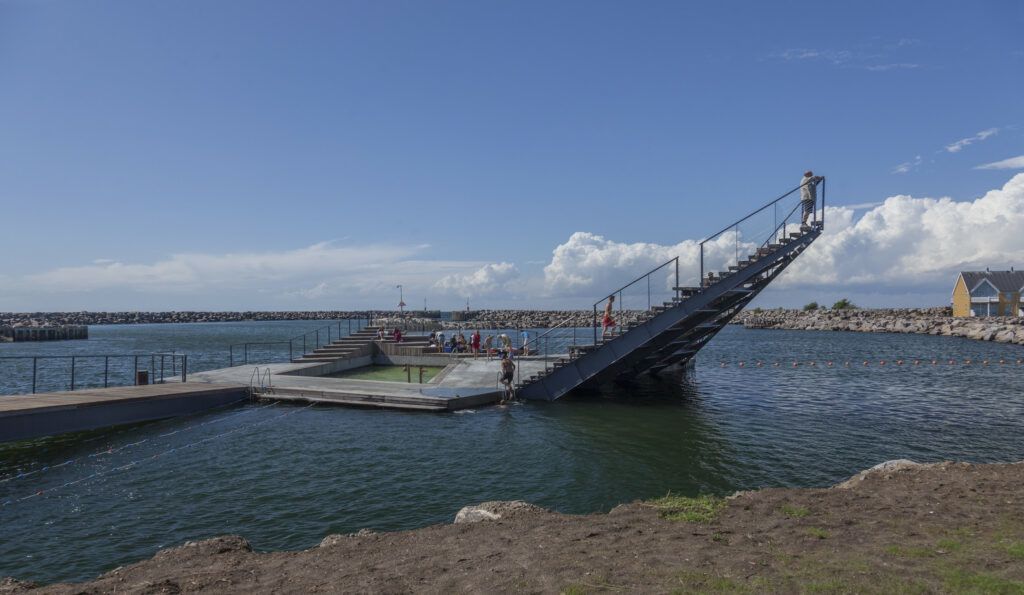
Modern sea baths build on these early ideas either by creating “sea pools” on beaches or building floating platforms, which themselves might offer diving boards, stadium seating, saunas, bathrooms, changing rooms, boat launches, and other amenities. A new example of the latter has popped up on the island of Bornholm in Denmark, and it looks like a gorgeous way to spend a sunny afternoon.
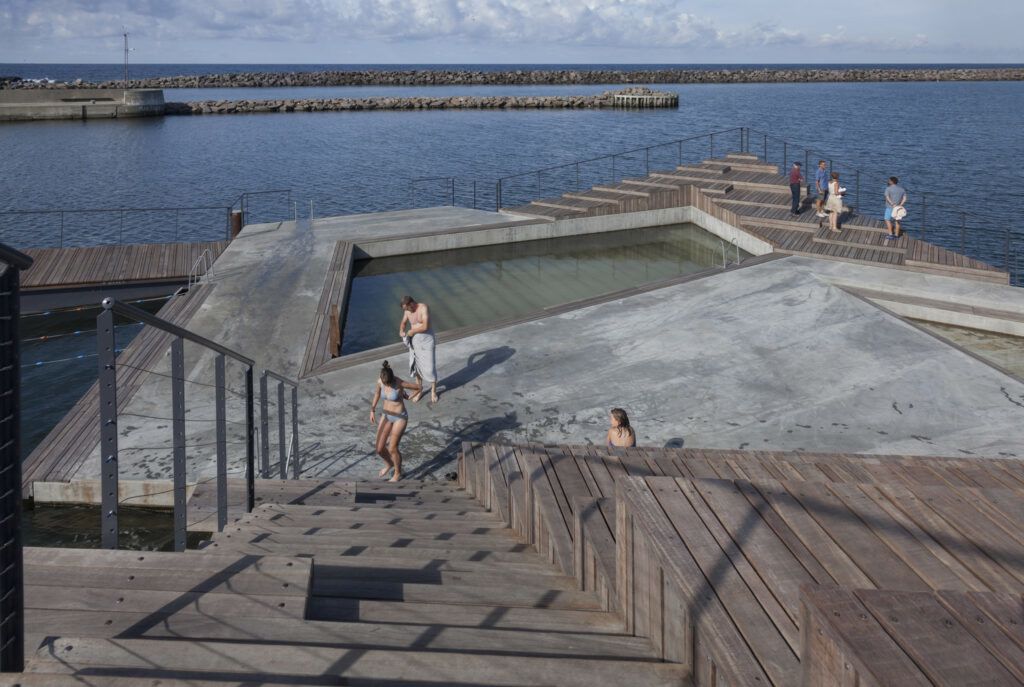
The Hasle Harbour Bath by White Architects is a sculptural space that’s bringing a little vitality back to a town hit hard by the decline of its fishing industry. Once a hub for shipping, fishing, and ferry service, the local port has grown quiet in recent years. But the things that are truly unique about Hasle Harbour are its numerous breakwaters, which protect it from the surge of the Baltic Sea but also make it feel distant and disconnected from life on land. The architects wanted to revitalize the area and make use of its isolated waters by creating a fun public area with views of the horizon.
Made of two timber stair formations protruding from a floating concrete platform, the Harbour Bath design takes inspiration from “flying carpets” to create a viewing platform and outdoor lounge, offering swimming pools of various depths along its inner edge and diving boards for swimmers who want to interact with the open water.
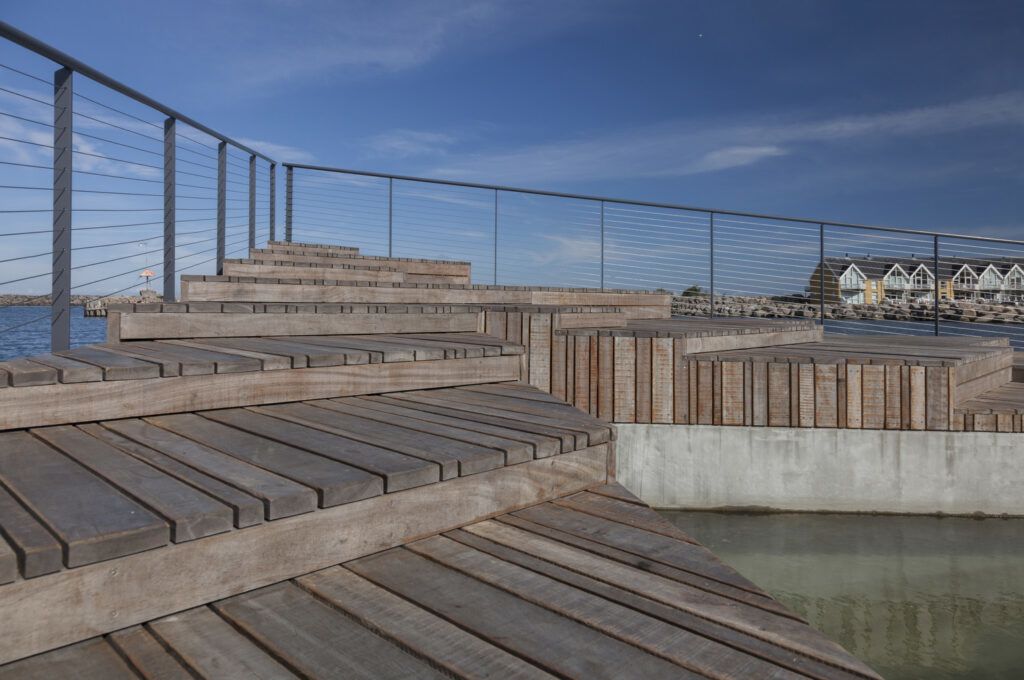

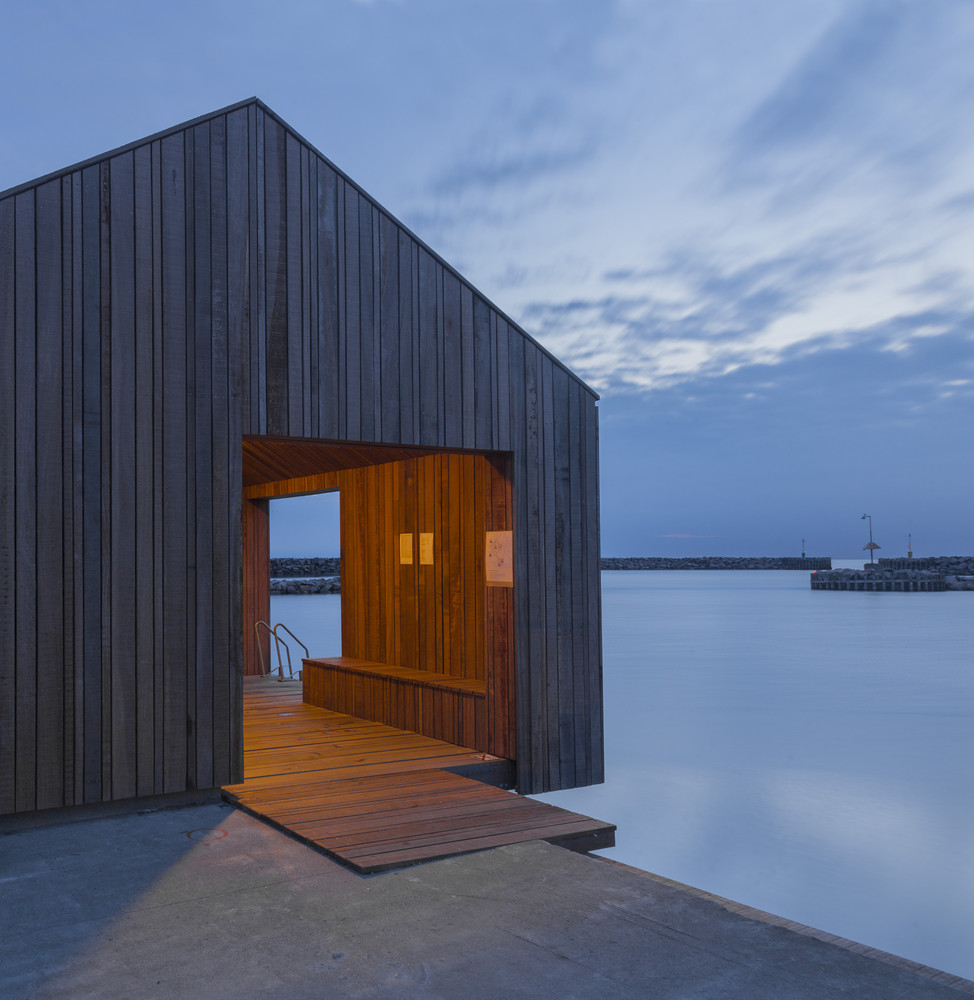
“The intention was for people to walk, sit, and lie on the new structure, which gave rise to the design concept of outdoor ‘carpeting’ that folded over the breakwaters,” White Architects explain. “The largest of these, the ‘flygande mattan’ or ‘flying carpet,’ forms the main structure. Welcoming all ages and abilities, the open design allows visitors to intuitively interact with the structure.”
“The unusual name refers to the tip of the Z-shaped structure, [which] shoots seven meters above the water’s surface, evoking the dynamism of the mythological carpet. At this westerly point, visitors are rewarded with views of the Hasle harbour, the sea, and the formidable sunsets.”
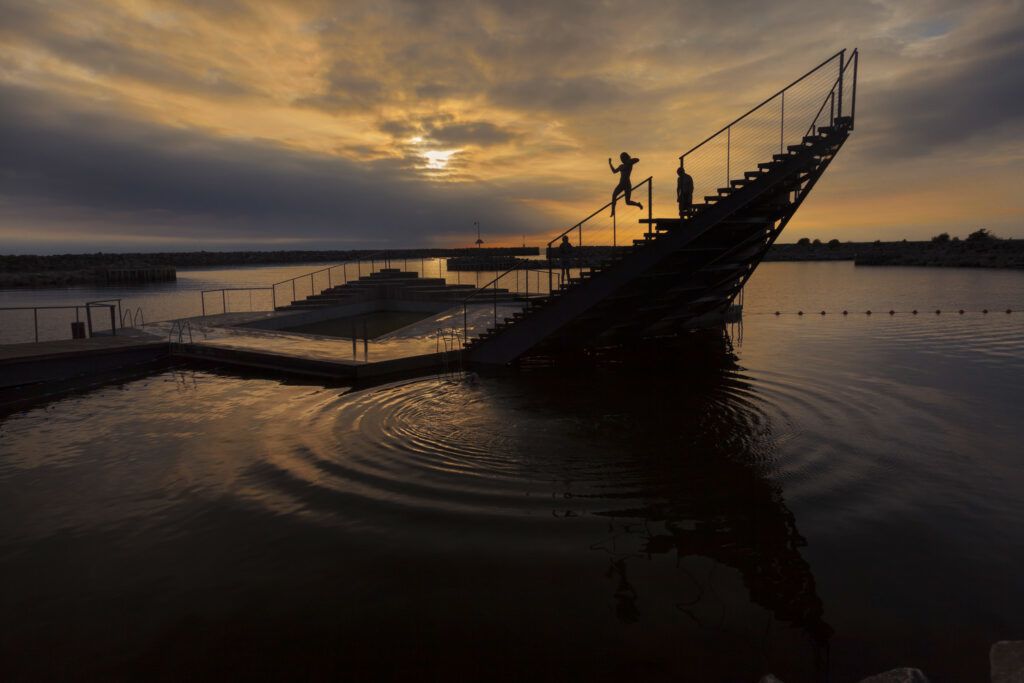
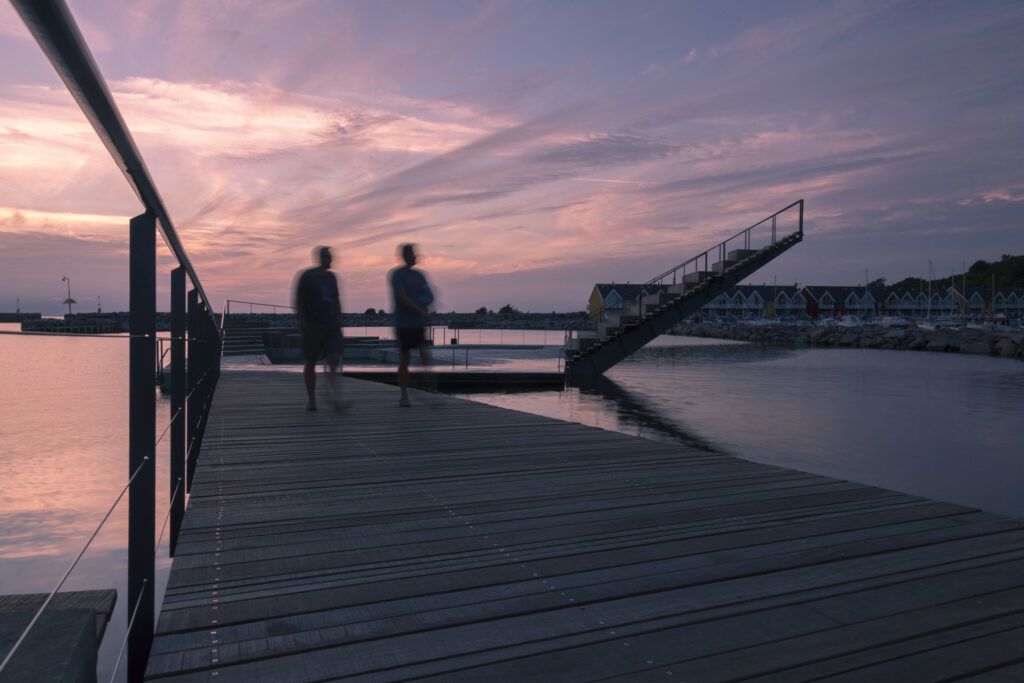
Hasle Harbour Bath adds to a collection of similar destinations throughout Denmark and elsewhere in Europe and the U.K. In addition to the old Ribersborgs Kallbadhus in Sweden, established in 1898, and Copenhagen’s Kastrup Søbad, built in 2004, bathers can also enjoy The Harbor Bath by world-renowned Danish architecture firm Bjarke Ingels Group (BIG) in Aarhus.
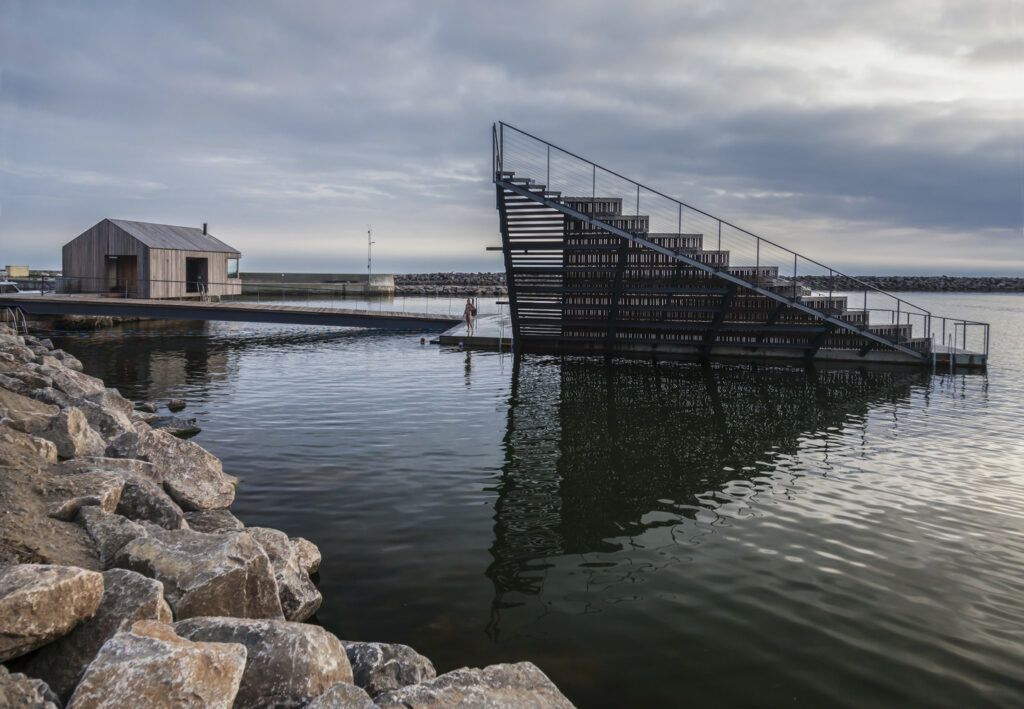
If the Hasle Harbour Bath’s piqued your interest, you’ll definitely want to check out a few more unusual swimming spots, including the Kastrup sea bath and Berlin’s Badeschiff.




